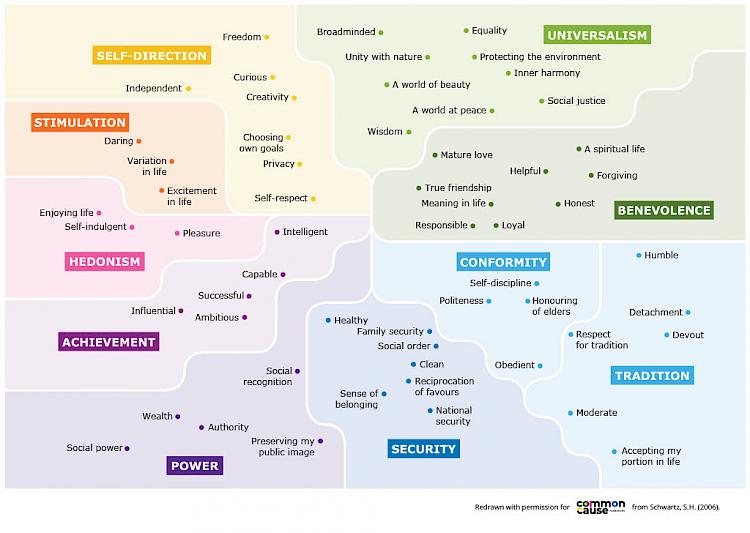
Ellie Humphrys & Katie Mabbutt
TRAFFIC
Catalysing Behaviour Change: Harnessing the Power of Personal Values
In our dynamic and ever-evolving world, bombarded by the influence of the latest ideas, trends, and cultural norms, our values serve as a compass that guides our behaviour. Explore how we can harness these values as we delve into the initiatives led by our dedicated Social and Behaviour Change (SBC) team. Using the principles of value theory as a reference, discover how the team cultivate responsible interactions with our natural world, ensuring the sustainable and legal management of our planet's wild species.
Songbirds, celebrated for their enchanting songs, craft their most beautiful melodies in the wild. Elephants, acting as seed dispersers, benefit countless species as they sow the seeds of the forests. Meanwhile, pangolins are skilled stewards of the soil, enriching it as they burrow, allowing life to bloom above ground.
Yet, these incredible gifts from nature are in danger of being lost due to unsustainable and illegal trade. As songbirds are increasingly plucked from the wild, elephants hunted for their ivory, and pangolins for their scales, overexploitation puts these wild species at risk of extinction.
How our values shape us
The underlying cause of overexploitation can be traced, in part, to the predominant values in our contemporary society. Values are the core principles we carry with us, guiding our thoughts, attitudes, and actions.
Over the past 50 years, the human population has doubled, and global trade has surged tenfold, leading to an increased demand for resources. In today’s culture, where the focus is increasingly on material wealth, status, and consumerism, adopting sustainable values becomes a challenge.
There are some positive shifts, with more consumers expressing a desire for healthy and sustainable choices, and the very wealthy leaning towards experiences over products. Despite this, the general trend suggests that higher income tends to promote material consumption, reinforcing external values.
When external values take the lead, they diminish intrinsic values, like compassion for other people and the planet we share. In societies where intrinsic values are overshadowed, wildlife stewardship and sustainable management can become secondary concerns. This opens the door to overexploitation, putting many of the world’s wild species at risk.
According to IPBES, the consumption and direct exploitation of products from wild species represents the second most significant threat to biodiversity. As such, rediscovering our intrinsic values can be a powerful force in protecting the planet’s wild species and the contributions they bring to our ecosystems.
Navigating the Schwartz Value Map
To gain a better understanding of how values impact the choices we make and our behaviour, we can turn to the Schwartz Value Map. This model organises human values into different categories, which helps us grasp how values are interconnected, how they affect each other, and how they can shape both individual choices and cultural dynamics.
In the Schwartz Value Map, values are grouped into three categories: intrinsic values (those that come from within), extrinsic values (influenced by external validation or rewards), or neutral values. The map reveals important insights into the way values interact, including three crucial aspects:
Engaging values: Values can be temporarily ‘engaged,’ when we think or experience certain things. When we witness someone being kind, for instance, we are more likely to respond positively to requests for help. Our values change throughout our lifetime based on experiences and reactions to them.
The “bleed-over effect”: Values that are close to each other on the map are heavily influenced by each other. So, if one value becomes more important, it can make its neighbours more important too. This can lead to some surprising results. For example, when people think about values like generosity and self-direction, they might be more likely to support environmental causes, even if nobody mentioned the environment directly.
The “see-saw effect”: Values that are on opposite sides of the map usually don't go together in a person's mind. It's a bit like a see-saw – when one side goes up, the other goes down.

Think of this map as a guiding compass that helps you choose how you want to live your life and the impact you want to make on the world. It's also handy for creating messaging for our Social and Behaviour Change (SBC) interventions that encourage responsible and respectful interactions with wild species.
Transitioning towards values that prioritise the well-being of both wild species and people on a global scale can be a significant challenge, especially when these values are rooted within a culture and reinforced by social influences. Our collaborative efforts with local experts focus on respecting cultural value systems while steering clear of behaviours that can harm both people and the planet. Acknowledging the diverse perceptions of nature across geographies and cultures, frameworks like the IPBES Values Assessment play a crucial role in guiding the efforts of our SBC teams.
1) Thailand: The Kind Dining Initiative
In an effort to curb the consumption of illegal wild meat in urban centres, we launched the Kind Dining Initiative in Thailand. Our research showed that some young, affluent people in cities were eating illegal wild meat not out of necessity, but because of the perceived positive impact it would have on their image and status as well as the excitement of eating lesser-known animals. The campaign was named ‘Kind Dining’ to resonate with the prevailing Buddhist principles in Thailand, which encourage intrinsic values such as compassion, kindness, and harmony with all living beings.

Our SBC experts took a creative approach to encourage responsible meat consumption, engaging a local celebrity chef to create sustainable versions of popular wild meat dishes. These dishes were sold in stores, and each package had a QR code leading to a website where people could pledge to avoid wild meat. They could join one of five animal teams, emphasising values of unity with nature and reducing the allure of wild meat consumption based on power and achievement.
A series of videos, presented by a well-known actor, celebrity chef, and wildlife veterinarian were distributed via Facebook and YouTube to create social change on issues related to the consumption of illegal wild meat. Following the campaign, 74% of participants who were initially reluctant to stop eating wild meat reported feeling more motivated to do so.
The use of a respected celebrities and social media influencers as messengers, combined with the incorporation of Buddhist principles, proved to be a powerful combination in shifting values and reducing the demand for wild meat consumption. This initiative aligns with the Guidance for CITES Parties on Demand Reduction Strategies, authored by TRAFFIC.
2) Viet Nam: Calling for Compassion
Bird singing competitions are popular in Viet Nam, with enthusiasts favouring birds that are wild-sourced. While some participants join for status and fame, others are drawn by the sense of tradition and community the contests evoke. This foundation of intrinsic values created an excellent opportunity for the bleed-over effect to take place.
The bleed-over effect occurs when values close together on the map reinforce one another. In this case, the existing community values already awoken by such competitions can be channelled and redirected towards other intrinsic values linked to protection and legality.
Buddhism holds a significant place in Vietnamese culture, leading many songbird keepers to engage in dharma talks. Dharma talks are speeches given by Buddhist teachers on topics related to the teachings of the Buddha. The SBC team collaborated with Buddhist monk Thich Thanh Huan to address this connection.
During his talks, he drew parallels between the birds and their human caretakers, showing that they both seek peace, and that birds can only truly find this in the wild. These messages stirred deep emotions of inner harmony, unity with nature, and a world at peace. As a result, 60% of the participants decided that they would not purchase songbirds again in the future.
3) China: The Green Collection

In China, ivory carving is a cherished part of the country's cultural heritage, where owning ivory signifies wealth, status, and success. While not the main driver, ivory carving did contribute to the poaching crisis, and the subsequent ban on ivory left master carvers facing unemployment. The Green Collection set out to change the narrative surrounding ivory.
We encouraged skilled artists to use sustainable materials like peach pits, olive pits, and walnut pits, to craft beautiful sculptures of endangered animals. These artists received 'green carving' certificates, inspiring them to view their art as a means of protecting the environment. Their motivation shifted from the raw value of the material to the creativity, skill, and love they poured into their work.
Our values play a crucial role in shaping our choices and actions, guiding us toward a world where our wild populations are managed sustainably and legally. By prioritising intrinsic values, we can continue to be amazed by the incredible biodiversity our planet has to offer – for the benefit of both people and the planet.
For further guidance on how to shape responsible interactions with our natural world head to our Change Wildlife Consumers Toolkit and Behaviour Change Online Course.


